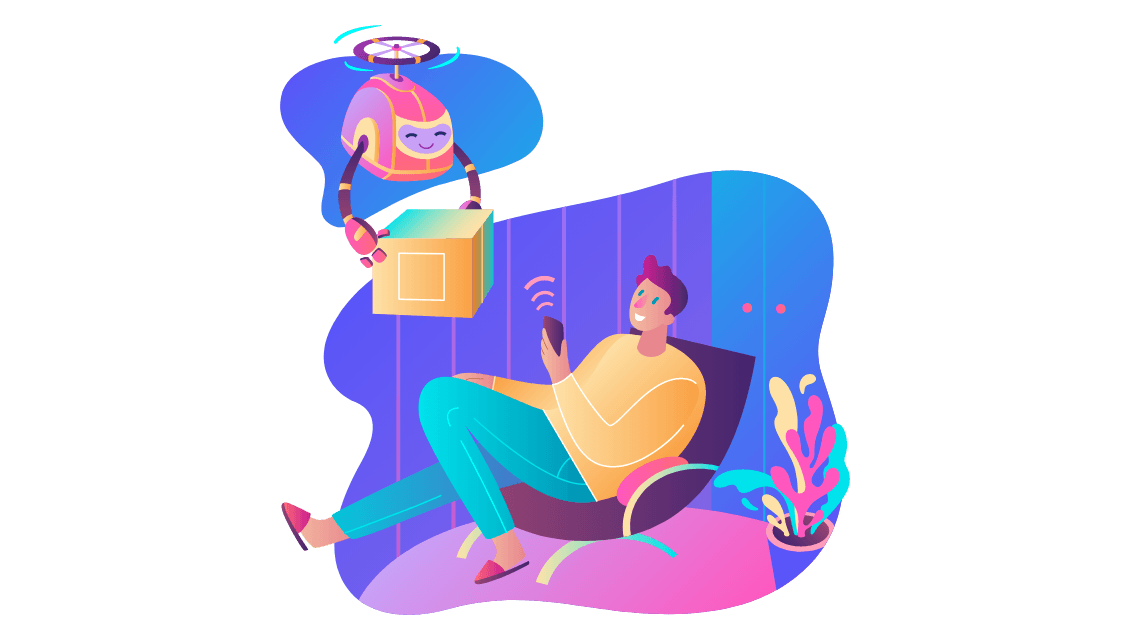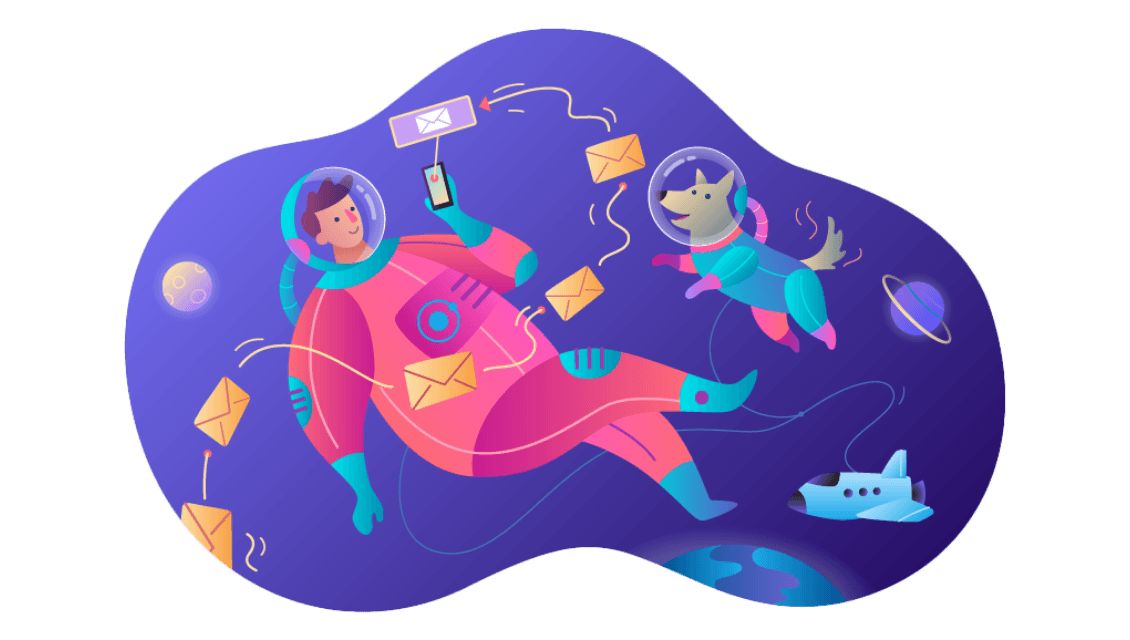Artificial intelligence for marketing
Your existing customers are your best source of income. You established a trusting relationship and you can contact them via email, push notifications or in-App messages without any incremental costs. You want to maximize your profit on these customers while retaining them as long as possible. Therefore you want to use every communication opportunity to deliver relevant offers and experiences to your customers.
Our machine learning agency offers the development, implementation and maintenance of artificial intelligence as a full service. We use machine learning on your data and deliver actionable data points right into your CRM. Take the guesswork out of your marketing campaigns and improve your marketing ROI by using state of the art artificial intelligence for cross- and upselling to make smarter targeting decisions.
Questions that will be answered in this post:
- Which product or service should I offer my customer next?
- With which offer can I develop my customer towards a higher value?
- To which customers should I offer a product from a different product category?
- To which customers should I offer the same product again?
Which product or service should I offer my customer next?
Using your first party data we create and train a machine learning model that will calculate the probability to buy for each of your products and/or services for each of your customers. We will then transform these probabilities into an actionable score. The product with the highest score is the best next offer you should make to this customer. We will push this information into your CRM so you can use it to dynamically fill communications like emails, push notifications or content on your website with the next best offer for each individual customer. Using the next best offer for each individual customer will drastically increase the conversion rate of your cross- & upselling campaigns as it will make your customer experience more relevant.
Use Case: Artificial intelligence for cross- and upselling
A day in the life (before)
Scene or situation:
Christian P is the Head of Marketing of a company that offers five different subscription services to their customers. One service is a premium version of another service. Four of the services could be booked simultaneously by each customer. As most of their customers only have a subscription to one service, Christian senses potential for cross- and upselling. He tasks one of his marketing managers Sophie to create a cross- and upselling campaign which offers one additional service to each client so that the revenue gain of the campaign is maximized.
Desired outcome:
Send a communication to each customer that includes an offer for the service that is most relevant to this specific customer, but which also maximizes the revenue gain from the customers in total. This will require Sophie to understand what conversion probability each service offering will have for each individual customer.
Attempted approach:
Sophie orders a report from the analytics team. She wants to understand if subscriber’s of different services have different characteristics. She also asks for a comparison between the customers that have one service and those that have subscribed to more than one service. After a few weeks she gets an extensive report from the analytics team. From the report she learns that the subscribers of one service are on average a bit older than the subscribers of the other services. The lowest priced service is purchased more often in one country than in all others. The report goes on showing many more big and minor differences between the subscribers of the different services. Sophie reads the report again and again for a week and thinks about how to segment the customer base in a way that will meet the revenue optimization goal of the campaign. As the deadline for the creative briefing is approaching, Sophie has to make a decision in the next two days. She decides to ignore the demographic information and use a heuristic based on the average estimated revenue gain. She takes the average conversion rates per service from past campaigns and multiplies them by the revenue uplift. Her calculation shows that one service produces the highest estimated revenue uplift. She decides to offer this service to all customers which don’t have this service yet. As her budget is limited she randomly chooses 25% of those customers for telemarketing and sends an email with an offer to the other 75%. To all customers that already have this service, she sends an email with an offer for the service with the second highest estimated revenue uplift.
Interfering factors:
The problem with the approach is the use of a heuristic, although every customer has different preferences and needs. Each individual customer has a different conversion probability for each of the five services. Sophie doesn’t know the conversion probability per service for each individual customer. As this data is not available to Sophie, she can’t make an optimal decision. Without this information she could use the report from the analytics team to build segments within the customer base in a very time consuming process, but if the decision has to be made fast, her best bet is to use a heuristic to address the revenue gain optimization goal of the campaign.
Economic consequences: Christian is not happy with the performance of the campaign. The heuristic Sophie used, led to many customers getting an offer for a service which they are not interested in. Many of the customers would have been interested in a different service, but as they are only offered one service, they don’t react to the communication. Although some customers have additionally subscribed to the offered service, the overall conversion rate of the campaign is low. The costs of the telemarketing could be covered, but the marketing ROI of the campaign is only slightly positive. There are high hidden opportunity costs associated with this campaign, as the marketing ROI could have been improved by supplying Sophie with better data to optimize the campaign.
A day in the life (after)
New approach:
After a discussion of the business objective Christian decides to outsource the creation of an artificial intelligence to aaimo. Aaimo builds an artificial intelligence from the available first party data that predicts a next best service offering per customer which maximizes the revenue gain and pushes this information into the company’s CRM. As the best next service offering per customer is accessible through the CRM now, Sophie can set up a campaign right away without consulting the analytics team. First she selects as many of the customers with the highest estimated revenue gain for telemarketing that her budget can afford. She then creates a list for the telemarketing agency that specifies which service should be offered to which of those customers. For all the remaining customers, she prepares one email with a dynamic component that offers the next best service offering to each customer. From planning to execution, the campaign only took one week.
Enabling factors:
Aaimo uses the available customer data to create a machine learning algorithm to predict the conversion probability of each customer for each service. Then this probability is multiplied by the revenue gained from this service, leading to an estimated revenue gain of each offering for each customer. The offering with the highest estimated revenue gain is then pushed into the CRM as a data entry for each individual customer. Without any additional manual analysis, Christian’s team now knows which is the best next service offering they should offer a customer to maximize the marketing ROI of cross- and upselling campaigns.
Economic rewards:
The machine learning algorithm aaimo built uses all the available data on the company’s customers to find the most relevant offering for each customer. As not only the conversion probability but also the possible revenue gain is taken into account, the marketing ROI of the campaign is maximized by using the new data point in the CRM as the recommended service offering per customer. Sophie reports a four digit percentage marketing ROI for her campaign to Christian. Christian is very happy with the result and tasks Sophie to automate her campaign so the company can profit long term from this success and experiment with new campaign mechanics in the future. Christian consults aaimo again for more actionable insights by unleashing the power of machine learning for his company.
With what offer can I develop my customer towards a higher value?
When we already have calculated the probability to buy for each of your customers, we can extend this data point with business metrics like revenue or profit. If we now take the probability to buy for each product and multiply it with the incremental revenue that offer would give your company, you get the estimated value that offer has for your company. This means now we know which offer is the next best offer you should make your customer to maximize your revenue. As soon as we have pushed this information from our artificial intelligence into your CRM, your marketing team can build cross- & upselling campaigns using this new information or change the offers of already implemented campaigns. Each of your customers will get relevant offers while you maximize the revenue and marketing ROI you get from your cross- & upselling efforts.
To which customers should I offer a product from a different product category?
For e-commerce or retail companies with hundreds or thousands of different products and many different product categories, there is another interesting application of artificial intelligence that we can build for you. If you know that a customer is likely to switch from one category of products to another or that this customer is likely to try a new product category, you can target this customer with an up- or cross-selling campaign. Douglas used this approach to understand which customers are likely to buy premium products. The marketing team of Douglas then used different creatives for customers that were likely to buy premium products.
Which customers should I offer the same product again?
For companies that sell fast moving consumer goods (FMCG) a very important information is which customers are likely to increase the average purchase quantity of a given product. We can model this information from your customer data and send it right into your CRM, so your marketing team can target replenishment campaigns at those customers that are likely to purchase more of a given product.
Many AI use cases require extensive experience to be built and constant monitoring and adaptations to run smoothly. We offer companies the opportunity to profit from artificial intelligence within a short time period and without building up internal resources.



